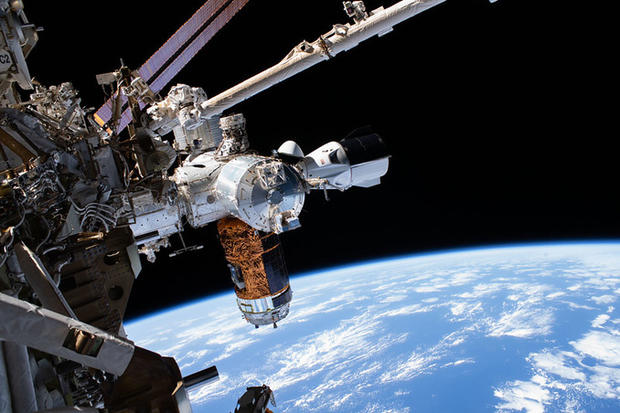SpaceX Crew Dragon astronauts prep for splashdown Sunday, weather permitting
Editor's Note: NASA astronauts Bob Behnken and Doug Hurley splashed down successfully in the Gulf of Mexico on Sunday. Read the latest update here. Our original story is below.
Keeping tabs on a tropical storm, NASA is pressing ahead with plans to bring two astronauts and their SpaceX ferry ship back to Earth Sunday with a splashdown in the Gulf of Mexico. It will be the first piloted re-entry of a Crew Dragon spacecraft and NASA's first ocean landing in 45 years.
"The return flight readiness review is complete and the NASA team and the SpaceX team, everybody remains 'go' for return," NASA Administrator Jim Bridenstine told reporters Wednesday. "We cannot wait to get Bob Behnken and Doug Hurley back to Earth.
"But of course, we have some weather pending. Just like when we launched, we had some challenges with weather, we may have that again. But the first opportunity remains August 2, and we look forward to seeing if that's going to be within the realm of what is possible."
Tropical Storm Isaias, heading toward Florida and the eastern Gulf of Mexico, is expected to pass through the area over the weekend. The Crew Dragon capsule used for this first piloted test flight is not allowed to land in winds higher than about 10 mph, in high waves or with rain and lightning in the area.
For a splashdown Sunday, Hurley and Behnken would undock from the space station's forward port around 7:30 p.m. EDT, setting up a splashdown near Panama City, Florida, around 2:42 p.m. the next day to wrap up a 64-day mission.
A SpaceX recovery ship, support crew and flight surgeons will be standing by to pull the capsule on board and help the astronauts get out as they begin readjusting to gravity. After initial medical checks, Hurley and Behnken will be ferried ashore by helicopter for a flight back to the Johnson Space Center in Houston aboard a NASA jet.
Steve Stich, manager of NASA's Commercial Crew Program, said mission managers will evaluate the weather day by day and make a final decision on whether to proceed shortly before the planned undocking Saturday night. Or earlier depending on the forecast.
"We'll have to evaluate the weather each day and just see how things unfold," Stich said. "This is a test flight, and we're going to take our time. We have plenty of opportunities here in August, and we're in no hurry to come home. We've completed all the objectives, really, for the mission."
Hurley and Behnken were launched to the International Space Station atop a SpaceX Falcon 9 rocket on May 30. It was the first piloted orbital launch by NASA astronauts from U.S. soil since the final flight of the space shuttle in 2011.
Stich said the capsule, designed, built and owned by SpaceX, has performed flawlessly during its two months in space and engineers are eager to get it back on Earth for a detailed post-flight inspection.
In the meantime, SpaceX is putting the finishing touches on a second Crew Dragon spacecraft at its Hawthorne, California, factory in preparation for the company's first operational flight, known as Crew 1, carrying four astronauts to the space station this fall.
The Crew Dragon that carried Hurley and Behnken into space will be refurbished, modified to handle rougher splashdown weather and launched on SpaceX's second operational crew rotation mission — Crew 2 — early next year.
"The importance of getting the vehicle back, getting Bob and Doug safely back, is to then go assess the data on this flight, that sets us up for the Crew 1 mission as early as the end of September," Stich said. "And we'll go through the data methodically for that flight and make sure we're ready to start the operational flights."





